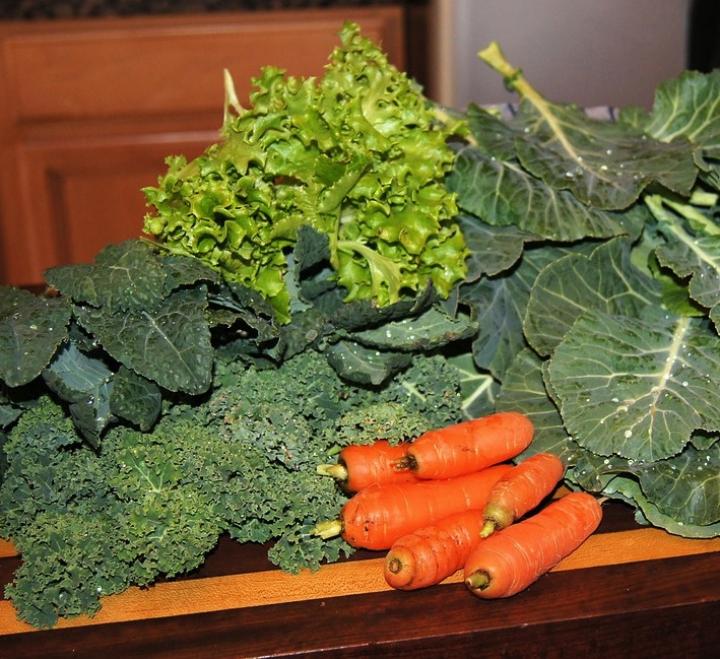






Aside from supplying conventional nutrients, all leafy greens (especially the deeply colored ones) are rich in phytonutrients, plant-manufactured compounds that deliver special health benefits.
All greens are low in calories. And a serving of just about any of the deeply colored ones contains your daily supply of vitamins K and A, most of your daily vitamin C, and a hefty helping of fiber, B vitamins and essential minerals.
As a class of food, leafy greens contain more nitrate than other foods. Recent research shows that dietary nitrate helps lower blood pressure, enhance cardiovascular health, and enhance athletic performance, among other benefits.
But eat greens every day to maintain these benefits; research suggests that the beneficial effects fall off rapidly if you don’t.
I often make a game of how many different home-grown vegetables I can tuck into a soup or salad. A variety of leafy greens invariably tops my list: kales, collards, mustards, lettuces, turnips, spinach, arugula, chard, beet greens, chicories, escaroles, and cabbages.
All these leafy greens grow in my gardens and greenhouse. During the growing season, I pick wild greens: dandelions, chickweed, purslane, wild violets, nettles (cooked only!), lamb’s quarters, pigweeds, and more. I also count the leafy green herbs I grow and use in abundance, especially basil, sage, and oregano. They add depth, flavor, and beneficial phytocompounds to any dish.
My leafies differ from one another in many ways:
What we commonly call “greens”–the leafy tops of cultivated plants—fall mainly into three big plant families.
Each of these plant families has its own concentration of certain classes of phytonutrients that affect its color and flavor—good reason to serve yourself a wide and changing variety of leafy greens.
Phytocompounds called phenols, flavonoids, isoflavones, terpenes, and glucosinolates give many greens a bitter taste. Plants produce these bitter-tasting chemicals to ward off animals that try to eat them. Some of these bitter elements are toxic in large doses so, like other animals, we’re hardwired to avoid bitter-tasting foods.
Accordingly, plant scientists have selectively bred the bitter elements out of our cultivated vegetables to make them more acceptable to consumers. But recent and ongoing research has shown that bitter phytocompounds can deliver a broad variety of health effects that help to ward off the chronic diseases associated with aging.
The good news: You can teach your palate to welcome, even enjoy, the strong, bitter flavors of greens such as endive, escarole, arugula, chopped kale, and others.
After all, think of how many of us have come to love strong black coffee, tea, and dark chocolate—all of which are rich in bitter-tasting phytonutrients that research suggests may be partly responsible for the health benefits claimed by them.
~ By Margaret BoylesMargaret Boyles lives in a wood-heated house in central New Hampshire. She grows vegetables, keeps chickens, swims in a backyard pond in summer, snowshoes in the surrounding woods in winter, and commutes by bike whenever possible.
Health Benefits Of Garden Plants And Garden Styles
A few of health benefits of the fresh Bach flowers.
Five Hammock Health Benefits You Didnt Know
The Health Benefits of Frequent Carpet & Upholstery Cleaning
Aesthetics and Health Benefits of Homedics Rock Garden Fountain
Copyright © www.100flowers.win Botanic Garden All Rights Reserved